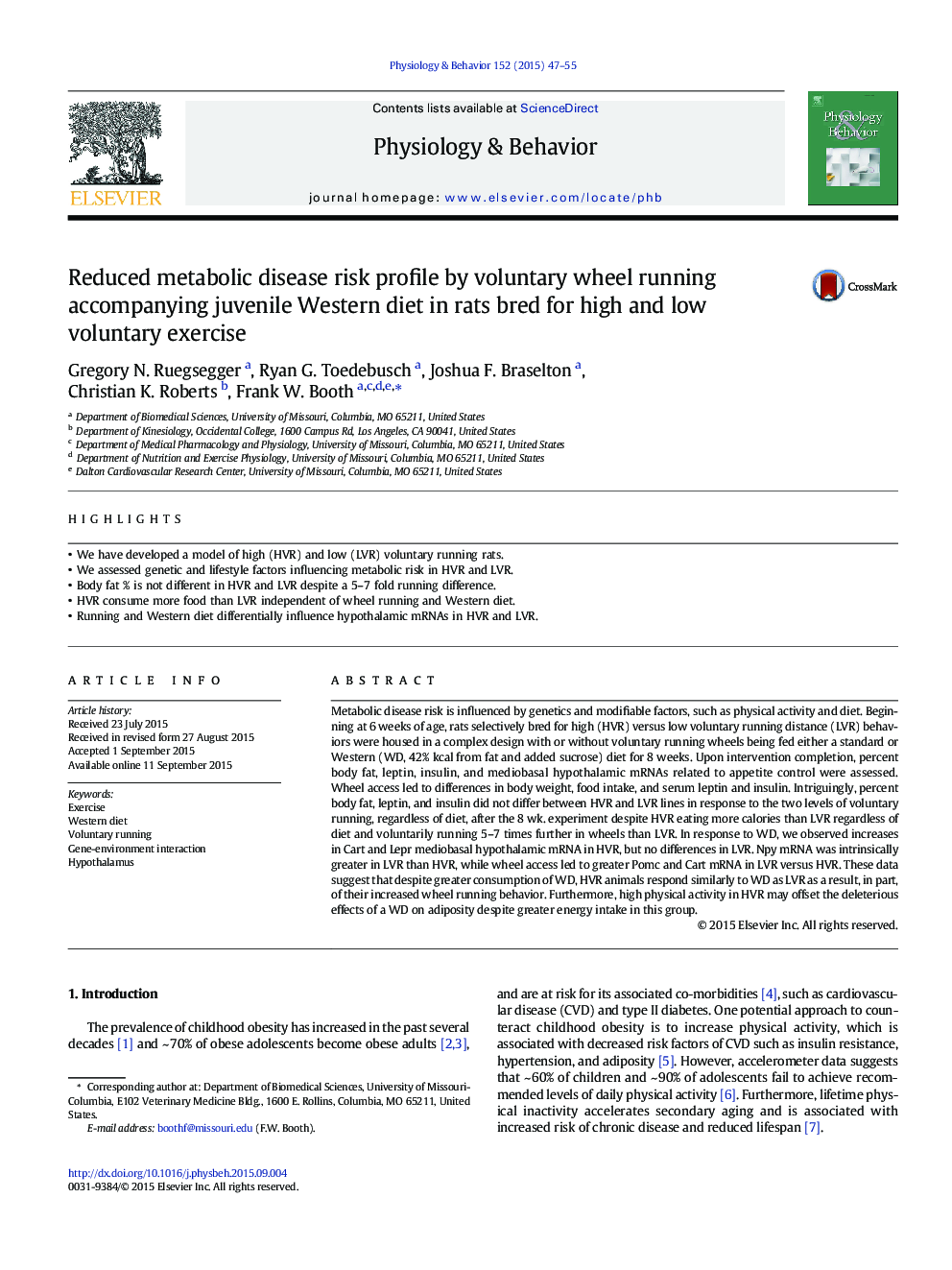| Article ID | Journal | Published Year | Pages | File Type |
|---|---|---|---|---|
| 5923029 | Physiology & Behavior | 2015 | 9 Pages |
Abstract
Metabolic disease risk is influenced by genetics and modifiable factors, such as physical activity and diet. Beginning at 6Â weeks of age, rats selectively bred for high (HVR) versus low voluntary running distance (LVR) behaviors were housed in a complex design with or without voluntary running wheels being fed either a standard or Western (WD, 42% kcal from fat and added sucrose) diet for 8 weeks. Upon intervention completion, percent body fat, leptin, insulin, and mediobasal hypothalamic mRNAs related to appetite control were assessed. Wheel access led to differences in body weight, food intake, and serum leptin and insulin. Intriguingly, percent body fat, leptin, and insulin did not differ between HVR and LVR lines in response to the two levels of voluntary running, regardless of diet, after the 8Â wk. experiment despite HVR eating more calories than LVR regardless of diet and voluntarily running 5-7 times further in wheels than LVR. In response to WD, we observed increases in Cart and Lepr mediobasal hypothalamic mRNA in HVR, but no differences in LVR. Npy mRNA was intrinsically greater in LVR than HVR, while wheel access led to greater Pomc and Cart mRNA in LVR versus HVR. These data suggest that despite greater consumption of WD, HVR animals respond similarly to WD as LVR as a result, in part, of their increased wheel running behavior. Furthermore, high physical activity in HVR may offset the deleterious effects of a WD on adiposity despite greater energy intake in this group.
Related Topics
Life Sciences
Biochemistry, Genetics and Molecular Biology
Physiology
Authors
Gregory N. Ruegsegger, Ryan G. Toedebusch, Joshua F. Braselton, Christian K. Roberts, Frank W. Booth,
